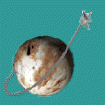
Current Issues:
SpaceViews
SpaceViews Update
Breaking News
Back Issues
Search
Subscriptions
Submissions
Forum
Space Sites of the Week
Home
Pathfinder on the Web
A great deal of attention was given to reports that the official Mars Pathfinder Web site at JPL, and its network of mirror sites around the world, had collected literally hundreds of millions of hits on and in the days following the Mars Pathfinder landing. Many Web surfers, though, found that quantity did not equate with quality.
A NASA press release on July 9 reported that the official Pathfinder Web sites had garnered 265 million hits between the 4th and the 9th. Earlier reports said 100 million hits were logged on July 4 alone, as Web surfers looked for the latest information on the landing.
Judging by discussion on several Usenet newsgroups in the week following the landing, many visitors to the official Web site were disappointed in the lack of updated information available online. Some complained that online news sources like CNN and MSNBC were providing more updated information than the official site, which would go up to a day between updates.
For whatever reason (NASA or JPL officials did not discuss why site updates were so infrequent, especially in the first few days after landing), updated information was hard to come by from official sources. New images were placed online on a daily basis, as they were received from Pathfinder and processed. There was little text information available on the current status of the mission; even the usual mission status reports were hard to find! Other information on the site was also dated.
Other Sites Fill the Gap
The lack of updates sent Web users to other sites looking for more information. CNN, MSNBC, and ABCNews.com all did excellent jobs providing updated information about the mission. CNN provided live video of Pathfinder press conferences using a Web browser plug-in called VXtreme, while MSNBC and ABC visitors could listen in to the press conferences on RealAudio. (The official Pathfinder Web site provided a list of Web sites providing audio and/or video of the press conferences using a Vosaic Java applet, but it difficult to get a good connection even after trying several different sites.)
As expected, Florida Today's Space Online provided good coverage of the mission as events unfolded. Several other newspapers, including the New York Times, Boston Globe, Washington Post, and Los Angeles Times, provided extensive online Pathfinder coverage, including in-depth stories. Astronomy Now, a British astronomy magazine, provided press conference summaries and mission news on a timely basis, often while the press conferences were still in progress!
While it's easy to cut down JPL for not providing up-to-the-minute information about the mission that we have somehow become accustomed to expect, they did have some successes. Their network of mirror sites meant that it was almost always possible for someone to access the official site at some location, regardless of traffic. During the entry, descent, and landing phase of the mission, the Web site provided frequent updates on the status of the mission as is landed on the surface -- which may have led people to believe that similar timely updates would be forthcoming during other aspects of the mission.
Beating Up Hit Counts
It's also worthwhile to deconstruct some of the numbers behind the official hit counts. The his counts seem impressive -- 265 million in five days -- but that number alone has little meaning. In Web jargon a "hit" is simply the retrieval of a file from a Web server. That file can be a text page, an image, or some other file. A typical Web surfer can rack up a large number of hits in a short period of time.
On a typical day in the last week, the Mars Pathfinder home page consisted of the HTML page itself, a graphic with the mission logo, and around ten images from Pathfinder. Each of these files counts as a hit, so loading the full page with graphics is about 12 hits. The number of hits goes up if the visitor goes to other pages, loading new HTML files and new graphics.
If the "average" visitor accounted for 15 hits each time he or she went to the site, the 265 million hits becomes a little under 18 million visits. Since many people visited the site more than once, looking for updated information about the mission, the number of different, unique, visitors to the site is probably somewhat smaller, perhaps on the order of a few million.
That's not to take away from the excellent work the JPL Web staff did to keep the sites up so that people could easily access them. But what sounds more impressive: a few million visitors or 265 million "hits"?
Added to site: 1997 July 14
